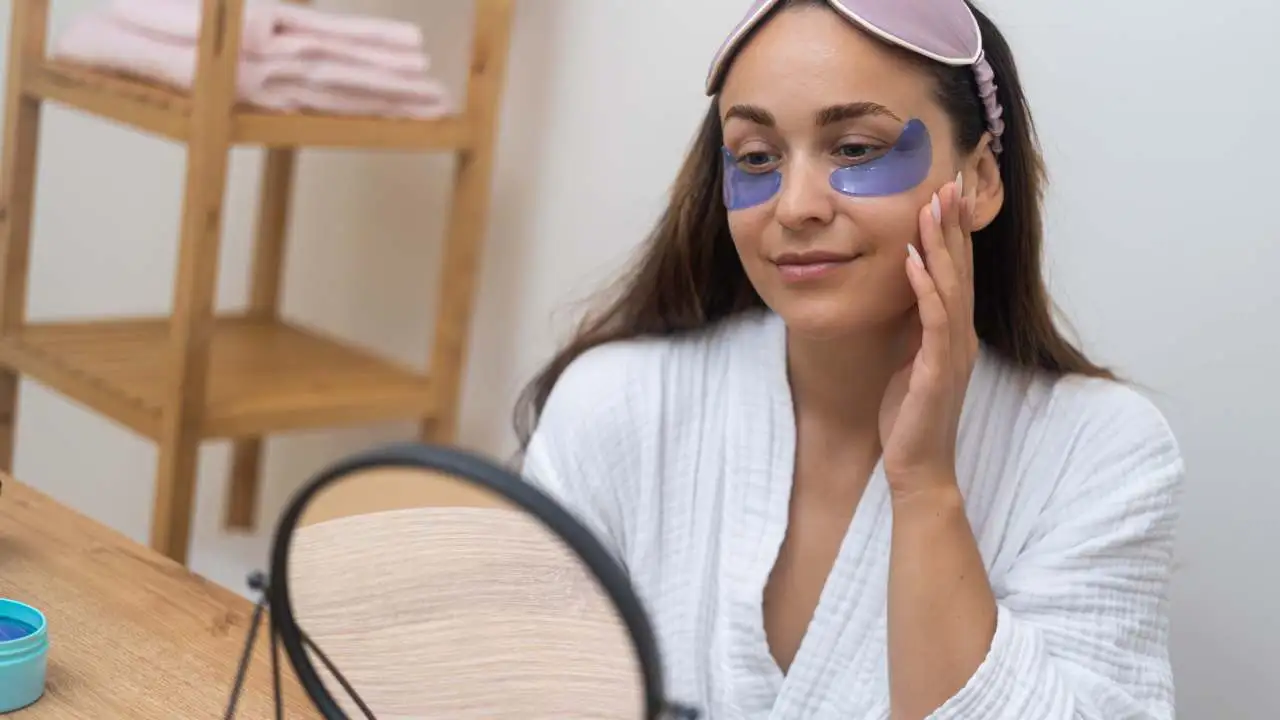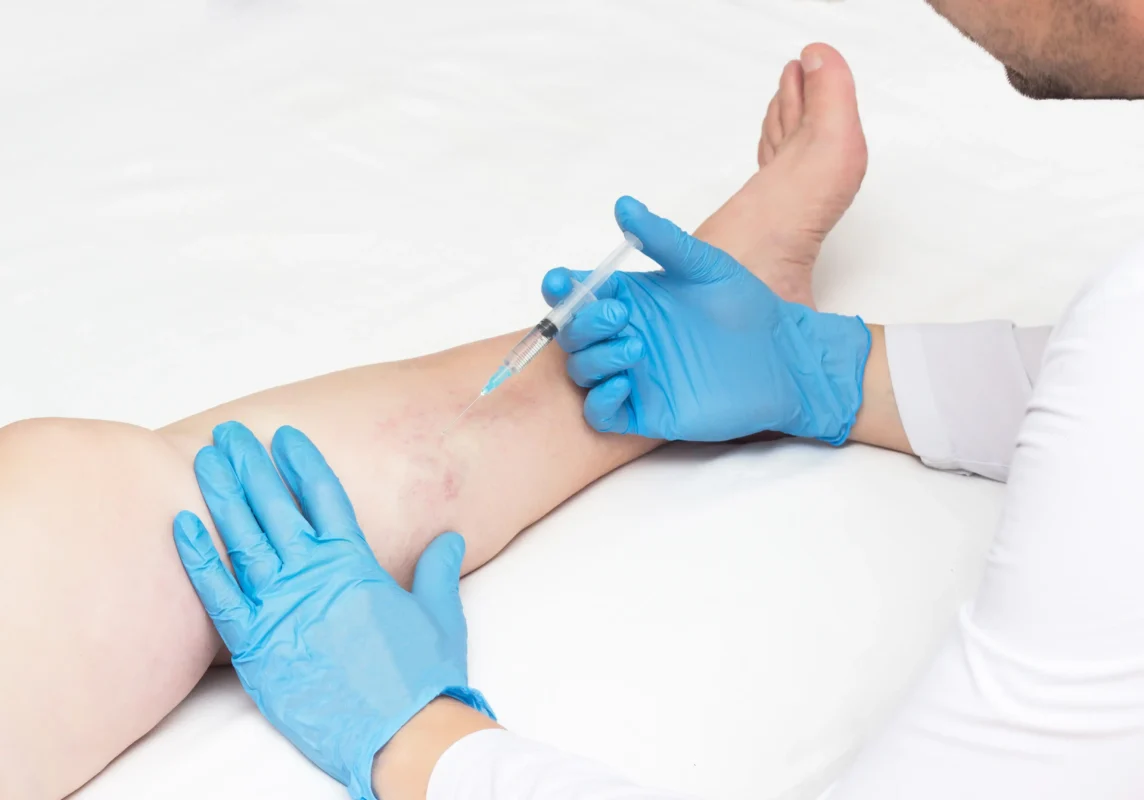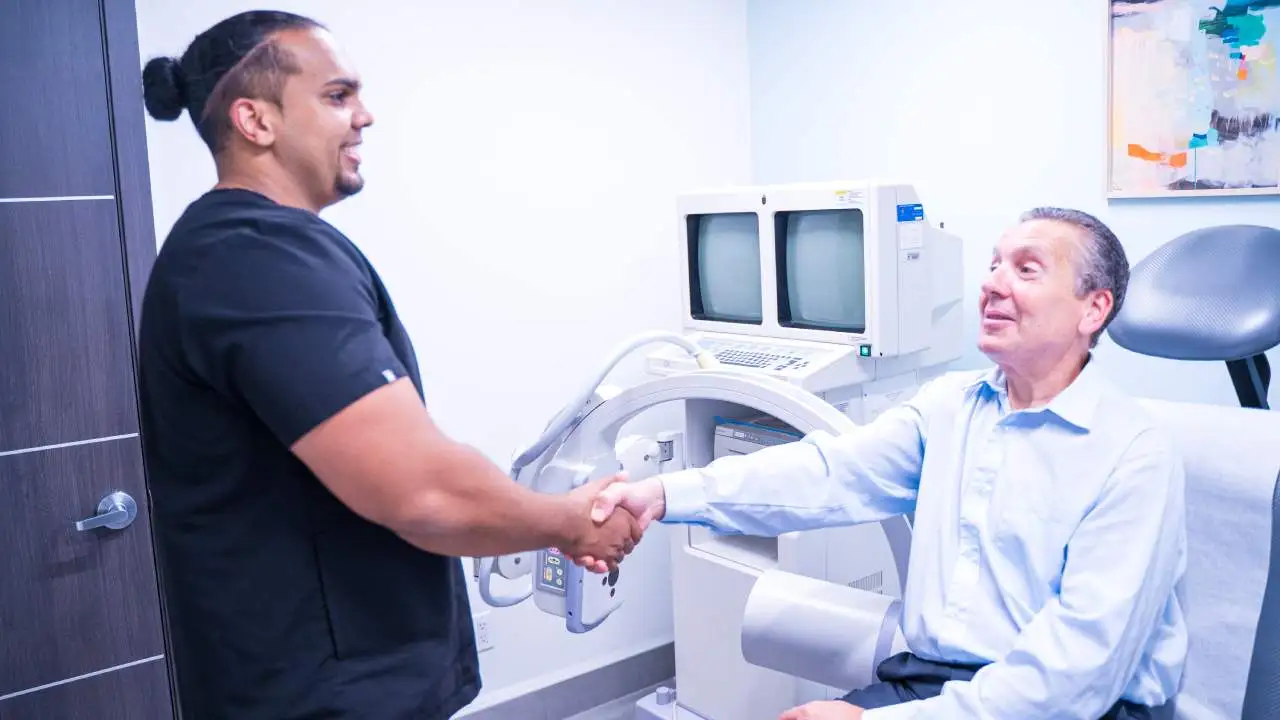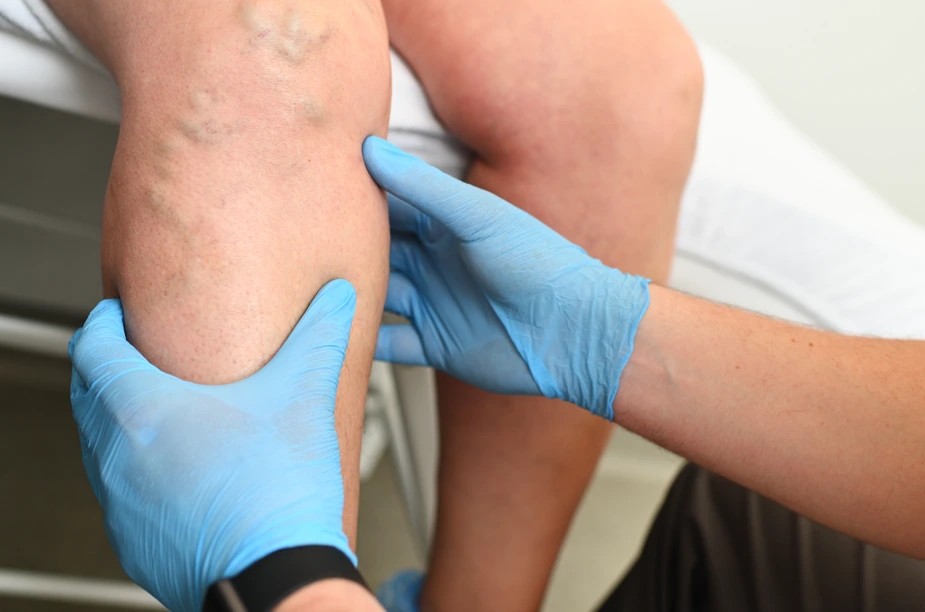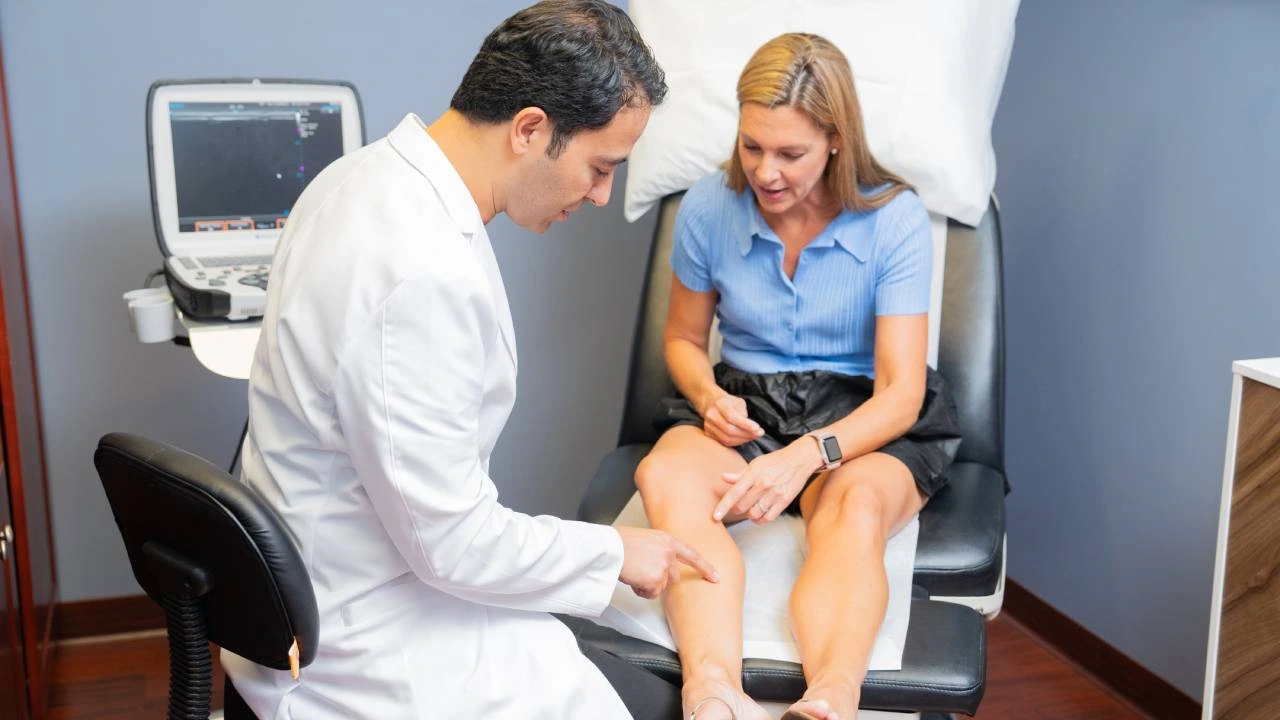You might be wondering why your face looks swollen in the morning. There are several possible causes—from water retention to circulation issues, including chronic venous insufficiency. Let’s explore what might be behind your morning puffiness and look at minimally invasive treatments that could help.
Have you ever woken up in the morning, glanced in the mirror, and wondered why your face feels unusually puffy? A puffy face in the morning can be unsettling, especially when it persists without an obvious explanation. You might think it’s due to last night’s meal, a lack of sleep, or even seasonal allergies. But what if the root cause is more than skin deep? Sometimes, seemingly minor symptoms like morning puffiness can indicate underlying health concerns, such as poor circulation or chronic venous insufficiency.
At Vein Treatment Clinic, we specialize in diagnosing and treating venous conditions that might be affecting your overall well-being. With state-of-the-art locations across New York, Long Island, California, Maryland, and New Jersey, our board-certified vein doctors can help you understand what’s causing your symptoms and curate a personalized treatment plan.
Common Causes of Puffy Face in the Morning
A puffy face in the morning can be caused by several factors, ranging from temporary lifestyle habits to underlying health conditions. While occasional puffiness may not be a cause for concern, chronic or recurring facial swelling warrants a closer look.
1. Dehydration or Excess Sodium
Dehydration is one of the most common but overlooked causes of morning puffiness. When your body doesn’t get enough water, it retains fluids to compensate, leading to swelling. Conversely, consuming too much sodium—whether from salty snacks, processed foods, or restaurant meals—can cause your body to retain water. Sodium disrupts your body’s natural fluid balance, leading to puffiness that is often most noticeable in the face and extremities.
2. Allergies or Sinus Congestion
Allergies, whether seasonal or environmental, can lead to inflammation and fluid buildup in your sinuses. This swelling often extends to the face, especially around the eyes. Additionally, sinus infections or chronic sinus congestion can exacerbate the problem, causing prolonged puffiness. Symptoms like nasal congestion, sneezing, or itchy eyes often accompany allergy-related puffiness. Identifying and managing the allergen source can help.
3. Poor Circulation
A less commonly discussed but significant cause is poor circulation, often linked to chronic venous insufficiency (CVI). CVI occurs when the valves in your veins fail to efficiently return blood to your heart, causing fluid retention that might manifest as puffiness in your face and extremities. This cause often goes unnoticed because CVI is associated with symptoms in the legs, such as varicose veins, swelling, and heaviness. However, fluid retention from impaired venous circulation can also affect other areas of your body.
4. Sleeping Position
How you sleep can significantly influence morning puffiness. When you lie flat, fluids in your body may accumulate in areas like your face, leading to noticeable swelling by morning. For individuals who sleep on their stomachs or sides, the pressure applied to one side of the face can exacerbate fluid retention. Elevating your head with an extra pillow and experimenting with different sleeping positions may help reduce this effect over time.
5. Hormonal Changes
Fluctuations in hormones, such as during the menstrual cycle, pregnancy, or menopause, can lead to water retention and puffiness. These changes affect how your body manages fluids, sometimes causing noticeable facial swelling. If you notice patterns of puffiness related to hormonal cycles, tracking these occurrences and discussing them with a healthcare provider can provide valuable insights and potential solutions.
How Puffy Face May Be Linked to Chronic Venous Insufficiency
Although CVI is primarily associated with leg symptoms, its effects on fluid dynamics in the body can cause generalized swelling. If you frequently wake up with a puffy face and experience leg swelling, heaviness, or visible veins, it may indicate underlying venous issues. Here are some reasons why venous insufficiency may lead to facial puffiness:
- Overnight Fluid Redistribution: When you lie down, gravity no longer assists your circulation, potentially causing fluid buildup in your face.
- Compromised Lymphatic Drainage: CVI can disrupt the lymphatic system, leading to increased fluid retention in various parts of the body.
- Increased Venous Pressure: Elevated venous pressure from CVI might manifest as puffiness in both the legs and face.
Why Early Diagnosis of CVI Matters
Ignoring chronic venous insufficiency can worsen symptoms and lead to long-term health issues. Early diagnosis allows for minimally invasive treatments that address the root cause of symptoms, improving circulation and quality of life. At Vein Treatment Clinic, our board-certified vein doctors use advanced diagnostic tools, including duplex ultrasound, to pinpoint the cause of venous issues. This allows us to tailor a treatment plan to resolve your symptoms.
Minimally Invasive Treatments for Venous Conditions
If your puffy face is related to chronic venous insufficiency, treating the underlying circulation issues can help alleviate the problem. Vein Treatment Clinic offers a range of minimally invasive vein treatments performed in outpatient settings with little to no downtime.
1. Sclerotherapy
Sclerotherapy is one of the most common and effective treatments for spider veins and smaller varicose veins. In this procedure, a vein specialist injects a medical solution into the affected vein. This solution irritates the vein lining, causing it to collapse and gradually be absorbed by the body. This treatment is quick, virtually painless, and requires no anesthesia. It is especially effective for cosmetic concerns and smaller venous issues.
2. Endovenous Laser Ablation (EVLA)
EVLA is a cutting-edge treatment that uses laser energy to close problematic veins. Under ultrasound guidance, a thin catheter is inserted into the affected vein. Laser energy is then applied to seal the vein, redirecting blood flow to healthier veins. This procedure is particularly effective for larger veins that contribute to chronic venous insufficiency. EVLA requires local anesthesia, and most patients can return to their regular activities within a day.
3. Radiofrequency Ablation (RFA)
Radiofrequency ablation is similar to EVLA but uses thermal energy generated by radiofrequency waves to close damaged veins. A catheter delivers heat to the vein wall, causing it to collapse and seal shut. RFA is minimally invasive, virtually painless, and boasts a high success rate. It is ideal for treating venous insufficiency and alleviating associated symptoms like swelling, heaviness, and fluid retention.
4. VenaSeal
VenaSeal is an innovative, non-thermal treatment that uses a medical-grade adhesive to close damaged veins. A small amount of adhesive is injected into the vein, sealing it permanently. VenaSeal stands out because it doesn’t require tumescent anesthesia (a numbing solution) or post-treatment compression stockings. Patients can resume normal activities immediately, making it convenient for those with busy schedules.
5. ClariVein
ClariVein is a hybrid treatment for venous insufficiency that combines mechanical and chemical methods. A catheter delivers a rotating wire that disrupts the vein lining while simultaneously administering a sclerosant solution. This approach is highly effective for treating larger veins with minimal discomfort. ClariVein is performed under local anesthesia and requires no downtime, making it an excellent option for patients seeking quick and effective results.
6. Ambulatory Phlebectomy
Ambulatory phlebectomy is a microsurgical procedure for removing bulging varicose veins. Tiny incisions are made near the vein, and the vein is gently extracted using specialized tools. This procedure is performed under local anesthesia, providing immediate cosmetic and symptomatic relief. It is an excellent choice for patients with larger veins that cannot be treated with injections alone. Most of these treatments are covered by medical insurance.
Lifestyle Tips to Reduce Puffy Face
While addressing chronic venous insufficiency is crucial, there are also practical steps you can take to minimize morning puffiness:
- Prop your head up with extra pillows to encourage fluid drainage.
- Drink plenty of water to regulate your body’s fluid balance.
- Reduce sodium intake and avoid overly salty foods to minimize water retention.
- Ensure you get enough restorative sleep to reduce inflammation and puffiness.
- Engage in physical activity to promote healthy circulation and reduce venous pressure.
Visit Vein Treatment Clinic for Expert Care
If you’ve been waking up with a puffy face and suspect chronic venous insufficiency or poor circulation might be the cause, the Vein Treatment Clinic is here to help. Our Ivy League-educated, board-certified vein doctors specialize in diagnosing and treating venous conditions with advanced, minimally invasive vein treatments. With convenient locations in New York, Long Island, California, Maryland, and New Jersey, you can find a vein clinic near you for expert care. Visit your nearest vein clinic or contact us to request insurance verification today.


